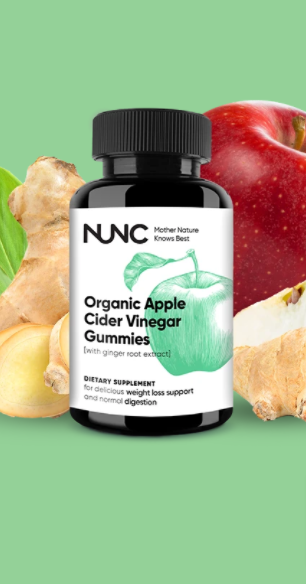Hypertensive emergencies are a very serious medical condition that can quickly become life-threatening if not treated promptly. This article will discuss hypertensive emergency vs urgency, and provide you with the information you need to know in order to act accordingly.
The difference between an hypertensive emergency (sometimes leading into acute kidney injury) and hypertension is that in cases of hypertensives emergencies it becomes difficult for a patient to breathe due to pulmonary edema or hypertensive crises.
Contents
What is a hypersensitive emergency?
A hypersensitive crisis is an urgent medical condition that requires immediate action. Hypertensive emergencies are classified as a hypersensitive emergency and can quickly become life-threatening if not treated promptly, so it’s important to learn how to identify the signs of hypertensive emergency vs urgency or pulmonary edema and know when you should seek out professional help.
What does hypertensive emergency mean?
Hypertension refers to abnormally high blood pressure in your body caused by many factors including genetics, diet, weight loss/gain, age, stress etc., but this article will focus on the acute stage of hypertension where there has been a sudden increase in BP (either systolic or diastolic) within 24 hours with no other identifiable cause for the rise in BP.
Pulmonary edema is a respiratory condition that causes fluid to accumulate in your lungs, which can lead to increased pressure on your diaphragm and breathing difficulties. This article will focus on identifying hypertensive emergency vs urgency or pulmonary edema symptoms and know when necessary professional care should be sought out.
What is a hypertensive crisis ?
Hypertensive crisis can occur when a person has severe high blood pressure that leads to other health problems and is life threatening.
Renal failure, pulmonary edema, congestive heart failure (CHF) are all possible complications of hypertension. The severity of the emergency depends on what organ or tissue is damaged by the high BP.
Hypertension emergencies arise as either sudden injury from heart attack/heart disease or kidney damage, which causes acute pain in chest area with shortness of breath and anxiety/panic attacks; while urgencies refer to chronic conditions like diabetes mellitus type II & coronary artery disease causing more long term symptoms such as weight loss despite increased appetite, headache, difficulty breathing at night time which will result in fatigue during day time.
Hypertension classifications:
There are three classes of hypertension
The severity of these stages depends on what number is used to measure blood pressure:
- Stage One (slight elevation of BP): a systolic reading over 140mmHg or a diastolic number higher that 90 mm Hg, but less than 160/100.
- Stage Two (moderate elevation) – Systolic over 180 mmHg and/or Diastolic over 120 mmHg.
- Stage Three Hypertension (severe elevation) – Systolic readings greater than 200mmHg or Diastolic numbers at 150mmHg and above with associated symptoms such as chest pain, shortness of breath, dizziness, headache or nausea.
The three types of hypertensive emergency are Hypersensitive Crisis, Acute Renal Failure and warning, call 911.
Atrial fibrillation is a heart condition in which the upper chambers of your heart (atria) beat chaotically and out of synchronization with both other atria beats and the lower chamber (ventricles).
The left ventricular hypertrophy typically associated with hypertensive emergency can lead to pulmonary edema; fluid buildup in the lungs that can result from high blood pressure or chronic congestive heart failure. The most common symptom for this is shortness of breath exacerbated by activity such as walking up stairs.
Hypersensitive crisis refers to those people who suffer from hypertension but do not exhibit any signs or symptoms until they are put under extreme stressors like an allergic reaction-when their body reacts quickly to the stress by raising blood pressure.
If you experience shortness of breath, chest pain or tightness, numbness in your limbs and lightheaded feeling when standing up from a sitting position due to hypertensive emergency, contact emergency services immediately!
Deaths are more likely as time delays occur without immediate treatment for hypertension. Seek medical attention if experiencing these signs/symptoms at any point while on medications: swelling around eyes; difficulty breathing even with oxygen supplementation; skin changes including purple spots which indicate low levels of hemoglobin (a protein found in red blood cells that carries oxygen).
These symptoms can be caused by high blood pressure lowering the amount of available oxygenated-blood reaching the tissues and organs within our body. This is true even if blood pressure is still within the normal range.
Hypertensive emergency vs urgency:
Hypertensive emergencies are caused by either heart or kidney injury; urgencies refer to high BP on top of chronic conditions like diabetes and coronary artery disease .
Urgencies are a more common reason for hypertensive emergency.
The most important thing to know about hypertensive emergencies is that they are life threatening and require immediate medical intervention in order to prevent vital organs from failing or causing death. Urgencies can be treated with anti-hypertension drugs, but will not improve the underlying cause of high blood pressure such as a heart attack or kidney disease.
So if you have any symptoms like difficulty breathing, chest pain, nausea/vomiting, anxiety/panic attacks please see your doctor right away!
the people most exposed to having a hypertensive crisis are those with diabetes, chronic kidney disease and heart failure.
Hypertensive crisis cases are also more common in people who have a history of stroke or transient ischemic attack (TIA).
In hypertensive crisis cases the pulse rate may be faster than 180 beats per minute, sweating can occur as well as nausea/vomiting, chest pain, anxiety/panic attacks and difficulty breathing.
Urgencies do not cause life threatening problems but will not improve the underlying medical condition that caused your high blood pressure such as a heart attack or kidney disease so you should still see your doctor if you experience these symptoms!
The most at risk groups for having an hypersensitive emergency include those with diabetes mellitus type I or II; chronic kidney disease; congestnive heart failure; hypertensive urgency is not usually life-threatening.
A hypertensive emergency (hypertension) typically includes a higher than normal pulse rate of 180 beats per minute as well as dizziness/fainting spells due to lower oxygen levels in the brain. These are also some other warning signs that may indicate hypertensive emergency:
- Severe headache
- Blurred or double vision
- Drowsiness/stupor
- Confusion and difficulty concentrating, thinking, understanding what other people say to you.
In children the symptoms may be different which can make them difficult to detect so it is important that parents have a way of recognizing when their child has high blood pressure as well as how to react if they show any warning signs!
Here are some tips for taking care of yourself during an episode of hypertensive emergency: Keep your head raised (lie down with feet elevated), consume plenty water and rest. If these steps fail then contact medical help immediately! It’s also advisable not slump over while sitting due to the risk of fainting.
The symptoms of hypertensive crisis include: swelling or fluid accumulation in body tissues (such as feet), high blood pressure for unknown reasons, chest pain on breathing deeply, coughing up frothy pink mucus, shortness of breath or trouble breathing at all. If any of these signs arise suddenly without any known cause, it’s important to seek medical help as soon as possible.
- High blood pressure for unknown reasons
- Swelling or fluid accumulation in body tissues (such as feet)
- Chest pain on breathing deeply
- Coughing up frothy pink mucus
- Shortness of breath or trouble breathing at all. If any of these signs arise suddenly without any known cause, it’s important to seek medical help as soon as possible.
- Blood pressure greater than 180/110 mmHg
- Heart rate over 120 beats per minute or more (may be less for children)
- Rapid breathing, sometimes with a bluish color to the skin and lips due to low oxygen levels in the blood circulation system – called cyanosis! *It’s important not to rely on only these symptoms as they may vary from person to person
If it becomes difficult to breathe then seek medical attention immediately and call 911 if you can do so safely! Quick action is needed as hypertensive emergency can quickly lead into acute kidney injury which could result in coma or even death. The most common cause of hypertensive emergencies are pulmonary edema and hypertensive hypersensitive crisis.
Related articles:
Everything You Need To Know About Vitamin B5 For Skin
How to improve water absorption in body
Hypertensive emergency and covid 19:
Hypertensive emergency and Covid 19 can both lead to acute renal failure.
Hypertension is treatable and often manageable with medication. You just need target organ damage prevention for that matter.
Remember that acute kidney injury is a risk factor for hypertensive emergency!
What to Know and When to Act
Hypertensive emergencies are the result of uncontrolled hypertension, it can be explained by elevated blood pressure due to high arterial pressure , which can happen quickly if not treated immediately. It’s important that you know when this happens so you can take action as soon as possible or get medical help right away because it could be life changing in an instant.
There are various causes of hypertensive emergency such as pulmonary edema or hypertensive hypersensitive crisis but they all have one thing in common – symptoms should never go ignored! One sign that may accompany high blood pressure at 180/110 mmHg is chest pain, nausea and vomiting.
If you’re experiencing any of these symptoms or are feeling dizzy, confused or can’t think straight it’s important to call your doctor right away as hypertensive emergencies could lead to a stroke, heart attack or even death if not treated quickly.
If you don’t have access to emergency medical services then the best thing to do is take an anti-hypertensive medication such as lisinopril 40mgs orally. It’s also important that you stay calm and wait for instructions from your physician because the severity of treatment will depend on how serious things are! One last note: hypertension crises should never be ignored so remember this when managing blood pressure long term.
The severity of hypertensive emergency depends on what organ or tissue is damaged by high BP, and here comes the role of a balanced blood pressure control to prevent severe hypertension or chronic hypertension in the future , from sudden injury (such as heart attack/heart disease) that causes acute pain in chest area with shortness of breath and anxiety/panic attacks, to chronic conditions like kidney damage which can cause more long term symptoms such as weight loss despite increased appetite, headache, difficulty breathing at night time resulting in fatigue during day time.
An urgent condition is defined as a situation where you must take care of the problem right away but not necessarily requires hospitalization; urgency includes chronic diseases like diabetes mellitus type II & coronary artery disease causing more long term symptoms such as weight loss despite increased appetite, headache, difficulty breathing at night time resulting in fatigue during day time.
A hypertensive emergency is defined as a situation where the person needs hospitalization and has symptoms such as chest pain with shortness of breath with anxiety/panic attacks; pulmonary edema (fluid collecting around lungs which can happen when blood vessels leak fluid into the space between lung tissue); hypertensive crisis (from sudden injury or chronic conditions that causes blood pressure to rise quickly)
Can kids have hypertensive emergency?
The answer is that hypertensive emergencies are a medical emergency and should be treated accordingly. This includes taking an anti-hypertensive medication, such as lisinopril 40mgs orally or other medications if prescribed by your physician.
If the hypertensive emergency cannot wait for instructions from your physician then it’s important to go straight to the nearest hospital because of how quickly these cases can progress without treatment. Hypertension crises in children should not be ignored either so make sure you do what you need to when managing hypertension long term, prevention is always better than cure!
Hypertension usually has no symptoms but can lead to serious medical complications such as acute kidney injury, renal failure if it’s a severe hypertension situation or pulmonary edema and death in some cases if not treated quickly enough and it might just turn into a case of chronic hypertension .
The most common causes are either high blood pressure (hypertensive crisis) or lung issues like pulmonary edema which will make the person experience difficulty breathing and more severe forms of hypertension should be addressed immediately by getting professional help. There are many risks factors that contribute to hypertensive emergencies including type II diabetes mellitus, arteriosclerosis and preeclampsia.
Preeclampsia is a condition in pregnant women that causes high blood pressure, swelling and proteinuria. It can be life-threatening if untreated but it can also cause hypertensive hypersensitive crisis which has the same symptoms as preeclampsia itself including headache, nausea/vomiting etc.
The progression of this disease is rapid so immediate medical care should be sought quickly after onset signs to avoid any further complications or death from lack of treatment.
These two conditions are very different because hypertensive emergency will progress quickly and need urgent medication whereas urgency does not have such dire consequences on an individual’s health status nor requires quick intervention like hypertensive emergencies do since they will take much longer to worsen significantly before needing acute care.
Hypertensive emergencies and urgencies are both hypertensive conditions that have different symptoms. Hypertensive emergency is a condition in which systolic blood pressure exceeds 180 mmHg or diastolic BP is over 120mmHg.
The progression of this disease can be rapid so immediate medical care should be sought quickly after the onset of signs to avoid any further complications or death from lack of treatment, as untreated but it can also cause hypertensive crisis which has the same symptoms including headache, nausea/vomiting etc.
The difference between these two diseases lies in how rapidly they worsen and need acute intervention; hypertensive emergency will progress more quickly without medicine whereas urgency does not have such dire consequences on an individual’s health status nor require such an immediate response.
If a person is hypertensive and has been unable to find relief from their symptoms, they should seek medical help as soon as possible before it worsens into malignant hypertension emergency which can cause complications or death on its own without treatment.
Enough time in an intensive care unit in the right moment can prevent a target organ damage an excessive increase in blood pressure, especially with a history of hypertension. If the individual is in hypertensive urgency however, then there are less serious consequences if no timely action is taken such as headache, nausea/vomiting etc.
Related articles:
Everything You Ever Wanted to Know About Flu Immunity
Can I Improve Cardiovascular Fitness Without Increasing Respiratory Fitness?











0 Comments